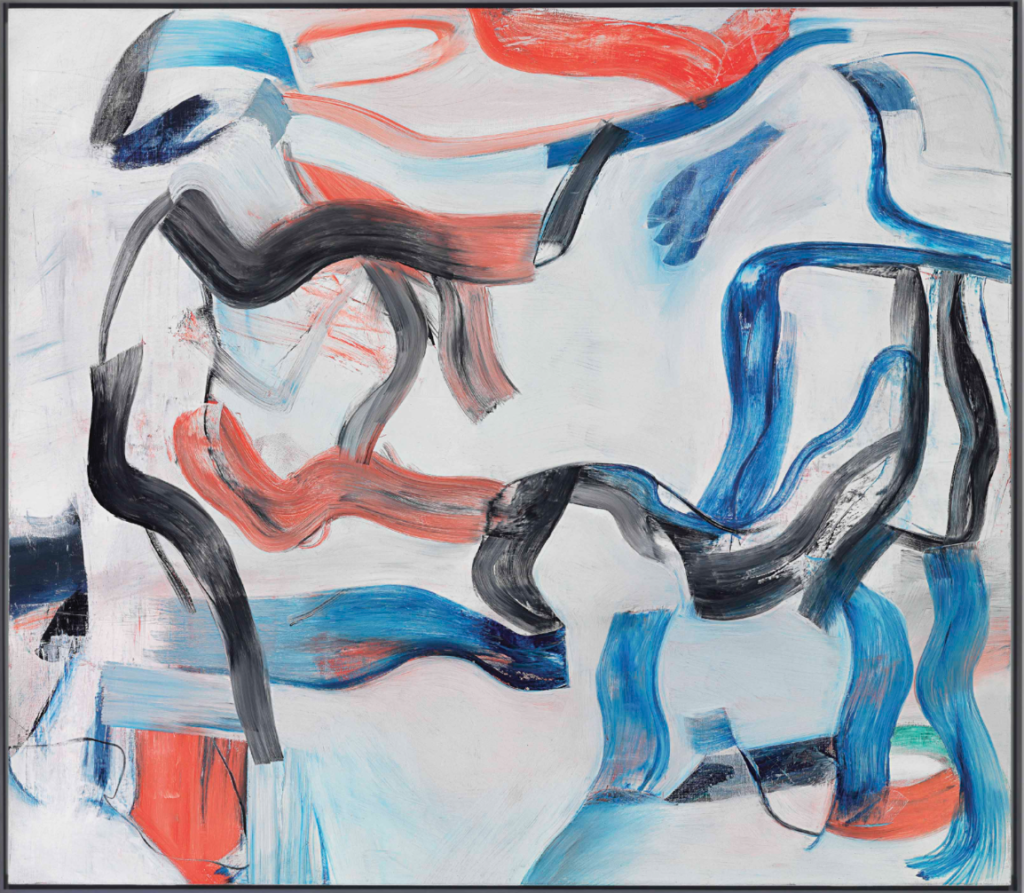WILLEM DE KOONING (1904-1997)
Untitled XXIV
oil on canvas
77 x 88 in. (195.5 x 223.5 cm.)
Painted in 1982.
PROVENANCE: Estate of Willem de Kooning, New York
Matthew Marks Gallery, New York
Acquired from the above by the present owner, 1998
EXHIBITION HISTORY: New York, Gagosian Gallery, Willem de Kooning: A Centennial Exhibition, April-June 2004, p. 99 (illustrated in color).
Price Realised: USD 17,525,000 Estimate: USD 9,000,000 – USD 12,000,000 Auction Closed: 11 Nov 2014

Willem De Kooning one of the leading masters and fathers of the Abstract Expressionist Movement, was born in Rotterdam, Holland on April 24, 1904. It was in 1926 when De Kooning came to the United States. Throughout De Kooning’s career, he was one of the most regarded artists of his time along with abstract expressionists Mark Rothko, Franz Kline, Richard Diebenkorn, Sam Francis, and many more. His estranged wife, Elaine De Kooning was also infamous for her paintings at the time as they were considered a dynamic duo.
In the painting, Untitled XXIV, De Kooning utilizes a unique variety of colors such as coral, black white, blue and even a bit of green. The techniques utilized by De Kooning with the brush and palette knife create this watery, mystical effect with the wet on wet technique directly onto the canvas. We see thick twirling, ribbons before us which dance and leap onto the surface. Within these heavy strokes, there is a great deal of depth and movement resembling streams of rivers rushing before our eyes.
The color black on the canvas almost closely resembles calligraphy painted on scrolls. During his career as a painter, De Kooning traveled to Japan in the 1970’s where he came back to New York stimulated by sumi ink painting and calligraphy. It was then when he devoted himself to his printmaking studio fabricating solely black and white lithographs.
The ribbons swerve into all sorts of directions possessing this vitality and constant flux, life and transcendence. Similar to notions with water as water constantly moves in waves, streams, rain drops, etc. With water there is life, fertility and cosmic motion which circles infinitely.
De Kooning’s painting leaves the viewer feeling overwhelmed initially due to the large quantity of brush strokes covering every square inch of the painting. But as we move close, we feel almost as though time is slowing down. When looking from left to right, specifically at the color blue, we see the slowing, lagging motion of the ribbon moving horizontally. We envision the movement of the brush making contact with canvas ever so steadily. The painting is like a music piece being played adagio. Little by little there are lagging, prolonging motions of the paint which appear darkly colored and thin in width and gradually crescendo into light, wide brush strokes. Where there is a change in motion and direction, there is a change in crescendo, volume and rhythm of the paint. The way in which all of the colors move is like a dance which is closely associated with the styles and techniques of De Kooning’s inspiration, Henri Matisse. Matisse’s oeuvre done in oil paint entitled, Bonheur de vivre (Joy of Life), 1905, resonates so clearly in my mind when closely comparing styles of De Kooning and Matisse. De Kooning derived the long, colored wavy lines from Matisse’s painting into his work developing his own style into what would allow him to flourish as one of the greatest, leading abstract expressionist painters of his time.
By: Isabella Di Scipio